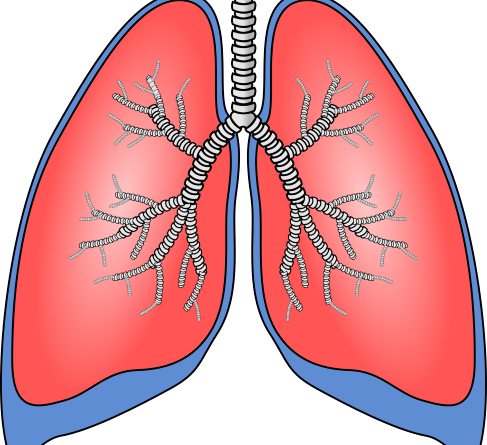Australian Scientists Grow Replica Human Lungs and Call for End to Animal Testing
Image by OpenClipart-Vectors from Pixabay
We were very pleased to learn of this new development as reported in The Guardian – another step in the move toward more human-centric medical research. As the article below says: “Aside from animal welfare concerns, findings from studies in animals are often not even applicable to or reproducible in humans, due to differences in biochemistry and anatomy.“ The U.S. has taken a step toward recognizing this by no longer requiring animal testing as new drugs are developed. Our hope is that Canada, Australia and the rest of the world will do the same.
Exclusive: ‘Everyone told me it would never work’, says professor of nanomedicine, but science needs alternatives to experimenting on animals
Professor of nanomedicine Wojciech Chrzanowski finds it “heartbreaking” to recall some of his early scientific work, where research involving animal testing was inevitable.
“The moment you start working in a lab, and have to start squeezing and cutting animals, you feel sorry for them,” Chrzanowski said.
“In the past, I was involved in a trial with baboons, and they are really intelligent. The moment you start approaching their cage they start screaming, hitting things, and hiding. They know that something wrong is going to be done to them. It is heartbreaking.”
Chrzanowski sounded distressed when he recalled working with a vegan scientist who began vomiting in the laboratory after being involved in animal research. Rather than accepting such experiments as a reality of working in medicine, he decided there had to be a better way.
Aside from animal welfare concerns, findings from studies in animals are often not even applicable to or reproducible in humans, due to differences in biochemistry and anatomy. Yet it is difficult to gain ethics approval and funding for clinical trials in humans to test the safety and efficacy of drugs and treatments without first proving safety in animals.
When Chrzanowski moved to Australia from Poland to establish a nano-bioengineering group at the University of Sydney 13 years ago, he organised a seminar on bio-printing, a concept similar to 3D-printing where cells are taken from a patient and then cultivated to produce enough “ink” to print models of tissues for medical research. Drugs and disease mechanisms can be studied and tested in these lab-printed models, rather than on animals.
“Maybe three people came to that seminar,” Chrzanowski said. “Everyone told me it would never work.”
But later in April, Chrzanowski and his colleagues will have published a paper in the peer-reviewed journal Biomaterials Research about a technology that goes even further than bio-printing.
They have successfully grown replica human lungs in their laboratory at the University of Sydney Nano Institute, where Chrzanowski is now deputy director. Their scientific paper even includes instructions on how to grow them.
At just a few millimetres wide, the “lungs” have little resemblance to those of humans. They are contained in a plastic tube, and when you look into the tube from above, the lungs resemble a small blob of jelly spread across a thin membrane.
“These plastic cages are placed into an incubator where the lungs are fully monitored all of the time,” Chrzanowski said.
“We need to know that the lungs have grown enough to be ready and matured for testing. So we developed what we call a ‘smart lead’ with electrodes, which sits continuously above the lung models and monitors the bioelectrical signals of the lungs.
“Based on these signals we can say when the lungs are fully matured and are ready to start treatment. It is same as hooking up a monitor to a patient and checking for their heart beat. So this biosensor we developed also helps us observe when, for example, a treatment is working and the injured lung is regenerating.”
There have been other attempts to build laboratory lungs. But they are too simple, Chrzanowski said, and too static. Human lungs are constantly changing, expanding and moving due to, for example, the impact of the circulatory system, and the heart beating.
The difference between these simple models and the lungs created by Chrzanowski, who came up with the concept, and his PhD student Thanh Huyen Phan, who was integral in designing and building them, is that they include this physiological perfusion, or movement, of fluid through the cells.
“We started building these lungs literally cell by cell, trying to get them as close as possible to the human physiology,” Chrzanowski said.
“That is what makes our models unique. The other two features of our models that we are proud of is that we can take cells from different patients and recreate each individual on these little dishes to test personalised treatments.
“The other aspect we are proud of is the size. A lot of models are so small you can’t do many experiments on the same model, but ours, at millimetres long, are relatively large and it means we can measure immunological responses, look at beating of cilia, the secretion of mucus all on one model.”
However, there are limitations to Chrzanowski’s model lungs. When testing a drug or treatment on a human, the drug may affect various parts of the body, such as the lungs, gut, heart and brain. This whole-body response is impossible to study using only the model lungs. Chrzanowski hopes to build multiple organs, connect them, and have them communicate and function together. But this work is decades away, with even the widescale use of model lungs for research still at least five years down the track, Chrzanowski said.
Each lung takes 28 days to grow in the lab. “It has not been simple to get to this point, and it has taken us years to get to where we are, and engineer for example the smart leads,” he said.
“But in terms of building the lungs, any person with basic skills in cell culture will be able to do this. Undergraduates could run a lab of these lungs. We are entering an era of replacing animal research and we are going to see rapid acceleration of that. People, governments, pharmaceutical companies, are realising the need to invest in this.”
Other countries are more advanced in using lab-grown models of human organs than Australia, Chrzanowski said. In January, a law was introduced in the US which means it is no longer required that pharmaceutical companies test new drugs on animals before human trials can occur. In Europe, dedicated funding is allocated towards producing innovative, non-animal technologies for testing drugs and studying disease.
But developments are happening in Australia. Last year, the New South Wales government held an inquiry into the use of primates and other animals in medical research. Chrzanowski presented to the inquiry, highlighting the inconsistency of results from animals, especially when laboratory conditions vary.
But the final report from the inquiry made no recommendations to stop primate experimentation, and found current technologies were not yet ready to replace animal testing. The report said: “At this point in time, it appears that it is more accurate to describe the emerging methods as adjuncts to, rather than alternatives or substitutes to the use of animals in medical research.”
The committee did call for the rapid phasing out of two specific medical research experiments – the use of rodents in forced swim tests and in smoking tower tests. And grants have since been established to support alternatives to animal research.
“In conjunction with the CSIRO, we are developing a strategy for Australia towards non-animal research,” Chrzanowski said. “Every single university should be developing labs and centres to non-animal models. They are reliable. They are rapid, and accelerate research discovery and translation. The results are reproducible. And these models are also cheaper than testing on animals.
“So with this in mind, why aren’t we already investing in these model and using them? The rest of the world is galloping ahead of Australia in this space.”
From, The Guardian, https://www.theguardian.com/science/2023/apr/11/australian-scientists-grow-replica-human-lungs-and-call-for-end-to-animal-testing




